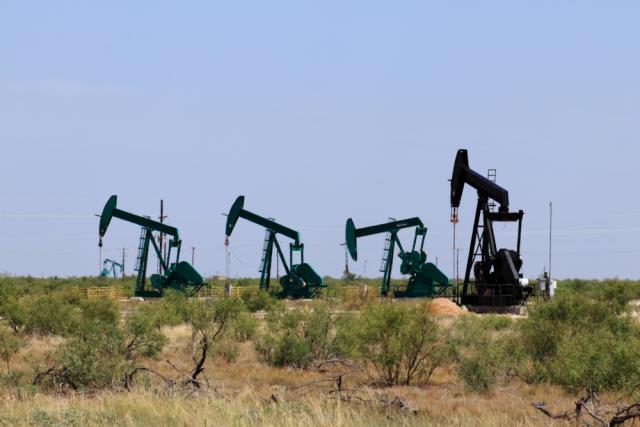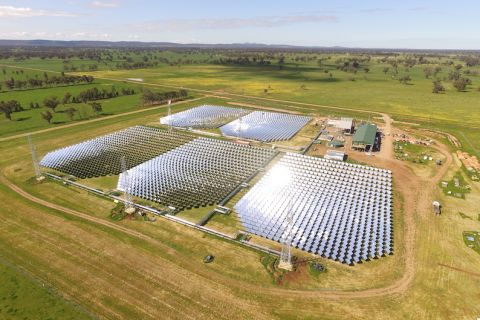
Rystad forecasts the Permian Basin to account for about half of all U.S. oil output in 2023. (Source: Shutterstock.com)
As demand for oil continues to surge on historically tight supply, Norwegian research firm Rystad Energy expects oil production in the Permian Basin to grow by almost 1 million bbl/d this year despite inflation worries, labor shortages and supply chain constraints.
Additionally, total output of the basin this year will beat Iraq’s crude oil production and the combined output of Norway and Brazil, new research by Rystad Energy shows. While the Permian Basin has been producing more oil per year than Iraq since 2020, the gap between the two countries will widen in the next two years with Permian production expected to average around 6.5 million bbl/d in 2023.
According to Energy Information Administration’s (EIA) most recent outlook, oil production in the Permian region will average about 5.3 million b/d in 2022. Since last year, the Permian has added about 114 oil-directed rigs, the EIA said.
“The Permian has become the hot spot for U.S. oil production, thanks to significant resources, low breakeven costs and high oil content,” Espen Erlingsen, head of upstream research at Rystad Energy, said in a statement.
“This trend is only likely to continue as global oil markets struggle with supply constraints and the demand for oil shows little sign of easing,” he added.
Pace of the Permian
In 2023, Rystad forecasts Permian Basin oil production to account for about half of all U.S. output of 13.2 million bbl/d, up from about 42% in 2021. Illustrating the Permian’s significant growth further, total oil production in the basin will outpace the combined output of Norway and Brazil in 2022, which will together produce about 4.8 million bbl/d, compared to Permian’s 5.6 million bbl/d.
Major Permian Basin producers have also reported production ramp up during recent quarterly earnings.
Following two strategic Permian acquisitions, oil major ConocoPhillips Co. said its Lower 48 production averaged 967,000 boe/d day for the first quarter, including 640,000 barrels from the Permian Basin, despite “elevated inflation rates” in the basin.
Public pipeline operator NuStar Energy said in its recent earnings call that it expects to see “healthy growth” in its Permian system volumes this year.
“We are encouraged by what they [customers] are telling us, particularly our privately held customers, about their drilling plans for the rest of 2022,” NuStar CEO Brad Barron said during a recent earnings call, adding that the Permian flows could easily exceed 600,00 b/d in 2023.
However, Pioneer Natural Resources Co.’s CEO thinks it will be difficult to hit those production numbers due to a number of challenges that producers are facing in the Permian Basin.
“I think too many think tank firms are way too high on U.S. production,” Scott Sheffield told investors during a quarterly earnings call. “And then you put on top of it what’s happening now in regard to labor constraints, frac fleet constraints, inflation constraints. I just think it's going to be tough to hit some of the numbers.”
More investments
One of the primary reasons for higher production growth in the Permian Basin compared to its counterparts is greater investments, according to Rystad’s research.
The U.S. shale industry pivoted toward the Permian Basin and eased investments in other shale plays like the Bakken and Eagle Ford between 2016 and 2018. Since then, total investments in the Permian Midland have jumped from $10.3 billion to a projected $23.5 billion this year.
Permian Delaware investments, Rystad noted, have followed a similar route, rising from $7.7 billion in 2016 to an expected $25 billion this year. On the other hand, investments in other key tight oil plays have failed to recover since the pandemic and have remained relatively flat.
“This lack of investment is a primary reason why production is not growing as fast in these areas,” according to Rystad. “However, investments are expected to rise across all plays this year as production increases, with the Bakken growing by about 40% over last year’s investment total.”
Recommended Reading
Amid ‘Battery Arms Race,’ Xerion CEO Talks Tech, Maturing Market, China
2024-04-10 - The late-stage battery startup is active in the military and electronics space, but is gaining attention for technology that extracts lithium from geothermal brine.
Element3 Extracts Lithium from Permian’s Double Eagle Wastewater
2024-01-30 - The field test was conducted with wastewater from a subsidiary of Double Eagle Energy Holdings’ produced water recycling facility.
Could Concentrated Solar Power Be an Energy Storage Gamechanger?
2024-03-27 - Vast Energy CEO Craig Wood shares insight on concentrated solar power and its role in energy storage and green fuels.
Elephant in the North: E3 Lithium CEO on Finding Opportunity ‘Hunters’
2024-02-28 - E3 Lithium is working toward commercial lithium production for its Clearwater project in South-Central Alberta’s Bashaw District, while developing its own DLE technology.
Occidental’s Lithium Technology ‘Ready for Prime Time’
2024-03-20 - Occidental is leaning towards a ‘build, own and operate’ approach to growing its direct lithium extraction business.





